891 Search Results for core vocabulary
March 23, 2017
by Carole Zangari -

Like many of you, the best part of the work week is when I get to teach language. As amazing as it is to help people with AAC needs become more linguistically competent, we have to be sure not to shortchange some of the operational skills that allow AAC learners to be successful. In this post, SLP Rachel Madel helps us think about supporting the development of operational competence in our AAC learners. The 4 Most Overlooked Operational Skills for High-Tech AAC Users When I first began helping children use high-tech AAC systems, I focused all of my energy on building strong communicators who could navigate through complex systems and use powerful language. I quickly realized that if I wanted to optimize the use of AAC I also needed to teach my students the mechanics of the machines they were using. Once I began teaching basic operational skills, I noticed... [Read More...]
March 6, 2017
by Carole Zangari -
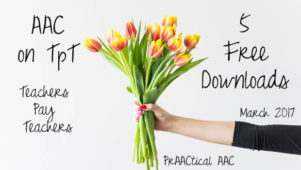
Looking for some AAC materials to round out your collection of resources? Teachers Pay Teachers, the online marketplace for materials made by teachers and therapists, has quite a few. Here are a couple of freebies to check out. AAC Myths by Susan Berkowitz Preverbal Communication-AAC Checklists by Ricki Block of Preschool Speechie Plus AAC Home Information Questionnaire by Tarra Bailey AAC Brochure for Teachers and Support Staff by Sublime Speech Leveled Core Communication Boards by Sister SLPs What are your favorite AAC resources on Teachers Pay Teachers? We’d love to hear about them.
July 27, 2016
by Carole Zangari -
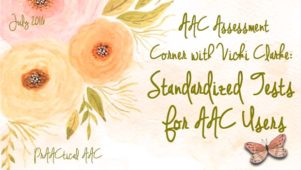
Do you have a love-hate relationships with formal testing? Are you required to use normed tests with your minimally verbal clients? Looking for recommendations on which tests to use? AAC specialist Vicki Clarke has you covered! Like many of you, I’ve had mixed feeling when it comes to using normed assessment instruments with my AAC learners, particularly when we needed to modify the test materials or administration procedures in order for them to be able to participate and respond. If the client can’t point to pictures, give a verbal response, or sit through an entire test, we have no choice but to adapt how the test is administered. As we all know, when we adapt test materials (e.g., putting the test items on an eye gaze board) or procedures (e.g., partner-assisted scanning), we lose the ability to use the normative data. We can, though, compare our learners to themselves at... [Read More...]
December 13, 2015
by Carole Zangari -

Monday – Supporting Language Growth in AAC Learners: Part 3 Tuesday – PrAACtical Resources: High Contrast Core Communication Board Wednesday – Video of the Week: Engineering Environments to Support AAC Thursday – 5 Presentation Handouts on AAC and Literacy
December 6, 2015
by Carole Zangari -
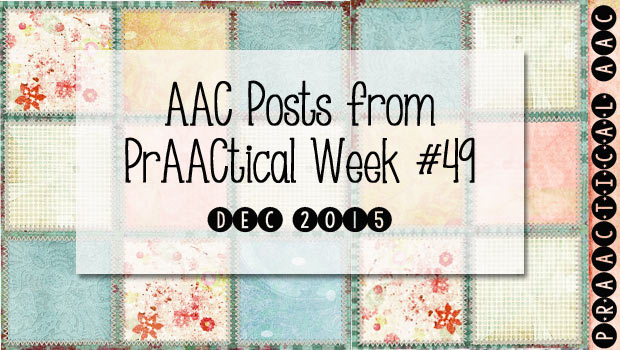
Monday – PrAACtically December: A Year of Core Words Tuesday – Site of the Month: Patient Provider Communication Wednesday – Video of the Week: Communication Access as a Social Justice Issue
October 4, 2015
by Carole Zangari -

It’s been a wonderful week to launch a month of activities for building AAC awareness and acceptance! Monday – PrAACtically October: Year of Core Word Resources Tuesday – PrAACtically October: A Core Word Calendar Wednesday – Video of the Week: AAC in a Shared Reading Group Thursday – AAC Awareness Month
September 3, 2015
by Carole Zangari -
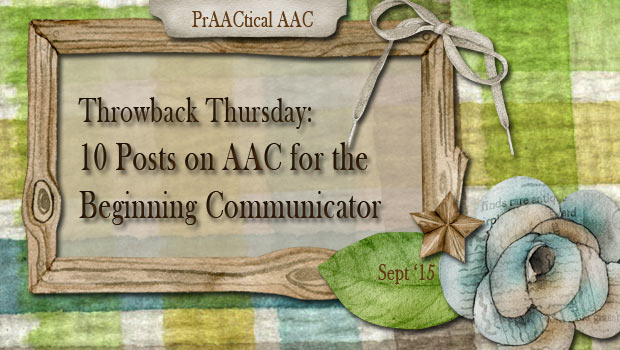
Looking for information to help you round out your services to beginning communicators? Here are some previous posts to explore. Intervention Core Words, Direct Vocabulary Instruction, and Beginning Communicators Helping Beginning Communicators Expand Their Sentence Length Let Me Tell You Something: Narratives for the Beginning Communicator Breaking Through with Emerging Intentional and Beginning Communicators of All Ages A PrAACtical Literacy Activity for Beginning Communicators Ideas About Vocabulary Instruction for Beginning Communicators Videos Recommended Practices for Beginning Communicators Teaching Prelinguistic Communication to Beginning Communicators Using Symbols with Beginning Communicators Other 5 Facebook Groups for Families of Beginning Communicators
August 4, 2015
by Carole Zangari -

We’ve all been there. You have meaningful goals, engaging materials, and a solid lesson plan for our therapy session. Five minutes into the session, it’s clear that the AAC learner has little or no interest in what we’ve prepared. Now what? Our choices are limited: persevere with the plan, modify it somewhat, or scrap it entirely. What’s a clinician to do? Take A Breath The first thing to do is breathe. Know that you are not the first one to struggle to engage this learner, and you won’t be the last. Think of it not as an excuse for an unproductive session but as a problem-solving challenge. Previous clinicians may have justified the session’s difficulties and atttibuted them to the learner’s lack of engagement, limited attention span, or behavioral problems. Personally, I feel sad for those clinicians because when we take that approach, not only do we fail the client,... [Read More...]
July 16, 2015
by Carole Zangari -
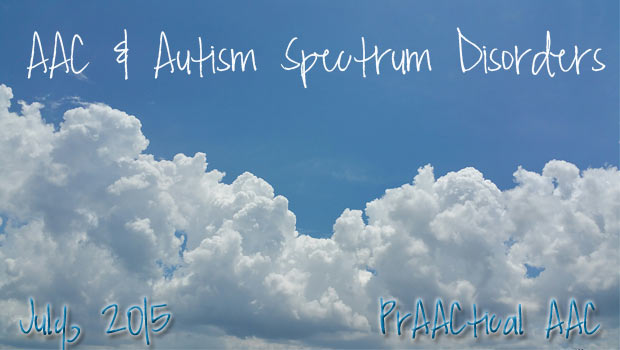
In Robin’s honor, we revisit some of her most popular posts. Please share them with people who might find them helpful. Beyond Requesting: Let’s Chat with Peers Begin AAC Now: 10 Things to Do AAC Must-Have’s for the Classroom and Therapy Room The First 12: Getting Started with Core Words Literacy For Everyone with Adapted Books Beyond Requesting: Using Scripts to Teach Conversation AAC Goals That Matter Creating Communication Boards: There are Lot of Apps for That! Join Together: Core and Fringe Vocabulary 30 Ways to Celebrate Autism Awareness Month
May 18, 2015
by Carole Zangari -
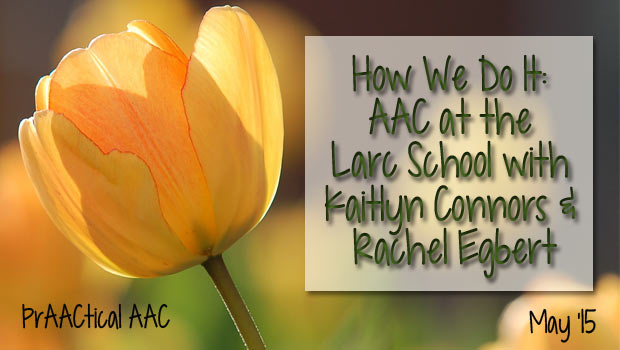
In honor of ASHA’s Better Hearing and Speech Month, we’ve invited clinicians who use AAC in their schools to share a bit about their work here on PrAACtical AAC. Today’s post is from Kaitlyn Connors and Rachel Egbert, two school-based SLPs in New Jersey. For the past 8 years, Kaitlyn has worked with children who use AAC. She earned her Master’s degree from Ithaca College and remains passionate about AAC, and helping each student communicate to the best of their abilities. Rachel earned her Master’s degree from the University of Nebraska at Omaha in 2013. She eagerly keeps abreast of the latest advances in AAC, which help her to deliver the most positive outcome possible for her students. Both Kaitlyn and Rachel currently serve students at Larc School. Beyond Requesting: PrAACtical Ideas for Building Language in the Classroom To take one student beyond requesting during snack time we implemented a core language board... [Read More...]









